Durango, Colorado, is home to various wildflowers that paint the landscapes with vibrant colors throughout the year.
From spring to fall, the flora of the region changes, creating a constantly evolving natural tapestry of stunning beauty. Durango's diverse geography offers an excellent opportunity to observe and photograph wildflowers, from the high alpine meadows to the desert canyons.
There are several trails and parks around Durango, where visitors can enjoy a wide array of wildflowers, including the iconic columbine, lupine, and Indian paintbrush.
The wildflower season, beginning in the spring, is an excellent time to explore Durango's natural beauty and is a must-see for anyone who appreciates the outdoors and nature's wonders.
In this guide, we will take a closer look at some of the wildflowers you can find in the Durango area, including where and what makes them unique.
Singing With Wildflowers in Durango
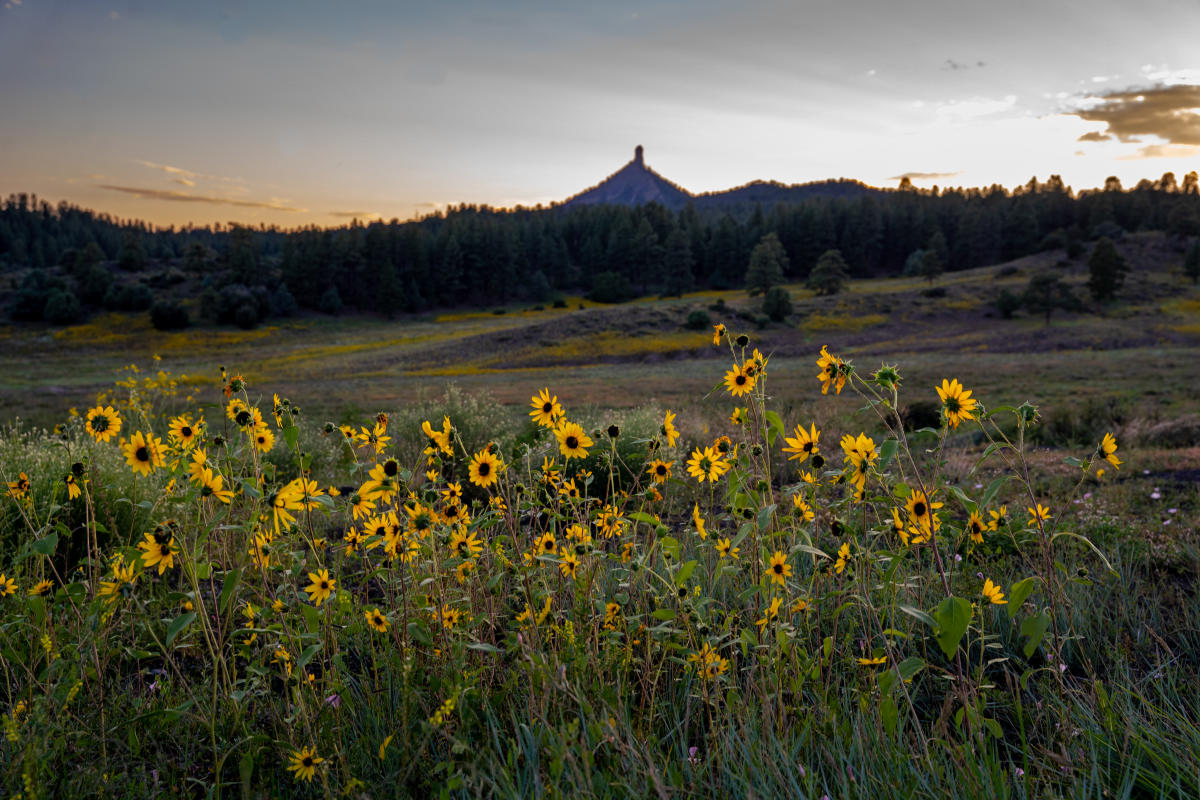
Prepare to embark on a beautiful spring adventure in Durango's untamed wildflower wonderland. Blooming throughout the seasons, the fields explode in a kaleidoscope of colors, with species such as lupine, Indian paintbrush, columbine, primrose, and more.
Hiking and biking the trails around Durango, be prepared for a rush of adrenaline and awe-inspiring vistas. The fragrant wildflowers amplify the already breathtaking natural scenery, making it a must-see destination for those seeking an immersive spring outdoor experience. Each trail is a unique journey, offering an array of wildflower assortments to explore and discover.
So, what are you waiting for? Saddle up, strap on your hiking boots, and prepare to sing amongst Durango's wildflower meadows.
Common Wildflowers in Durango
Some common Durango wildflowers include irises, Indian paintbrushes, columbines, sunflowers, and daisies. These colorful blooms can be found along many hiking trails, adding to the area's natural beauty.
Oxeye Daisy
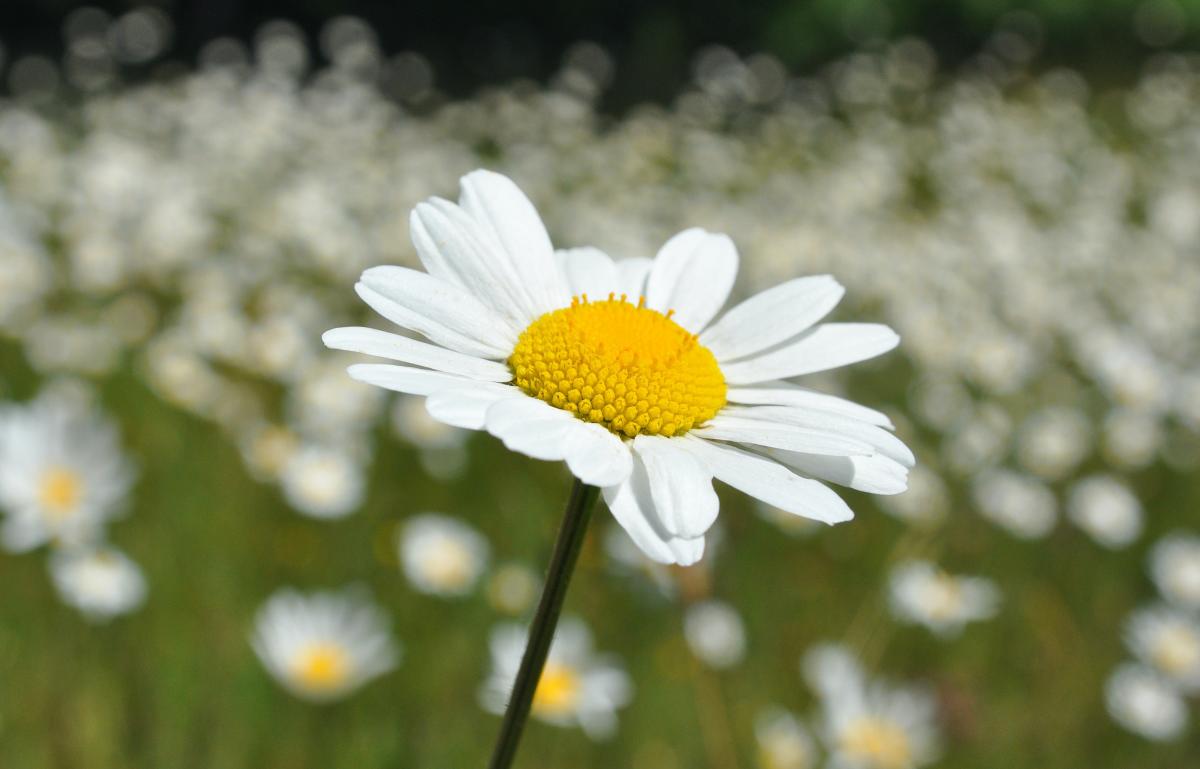
The Oxeye Daisy, also known as the Leucanthemum vulgare, is a wildflower commonly found in meadows, fields, and along roadsides throughout Durango, Colorado.
These flowers bloom from early summer to early fall, feature white petals surrounding a yellow center, and grow up to three feet tall. Oxeye daisies are often used in herbal medicine to treat ailments such as indigestion and coughs. Interestingly, they are also used to produce many beauty products, such as skin creams and shampoos.
In France, the Oxeye Daisy was thought to be connected to divination.
While they may be beautiful and valuable, they can also be considered invasive in some areas and outcompete native plant species.
Goldenrod
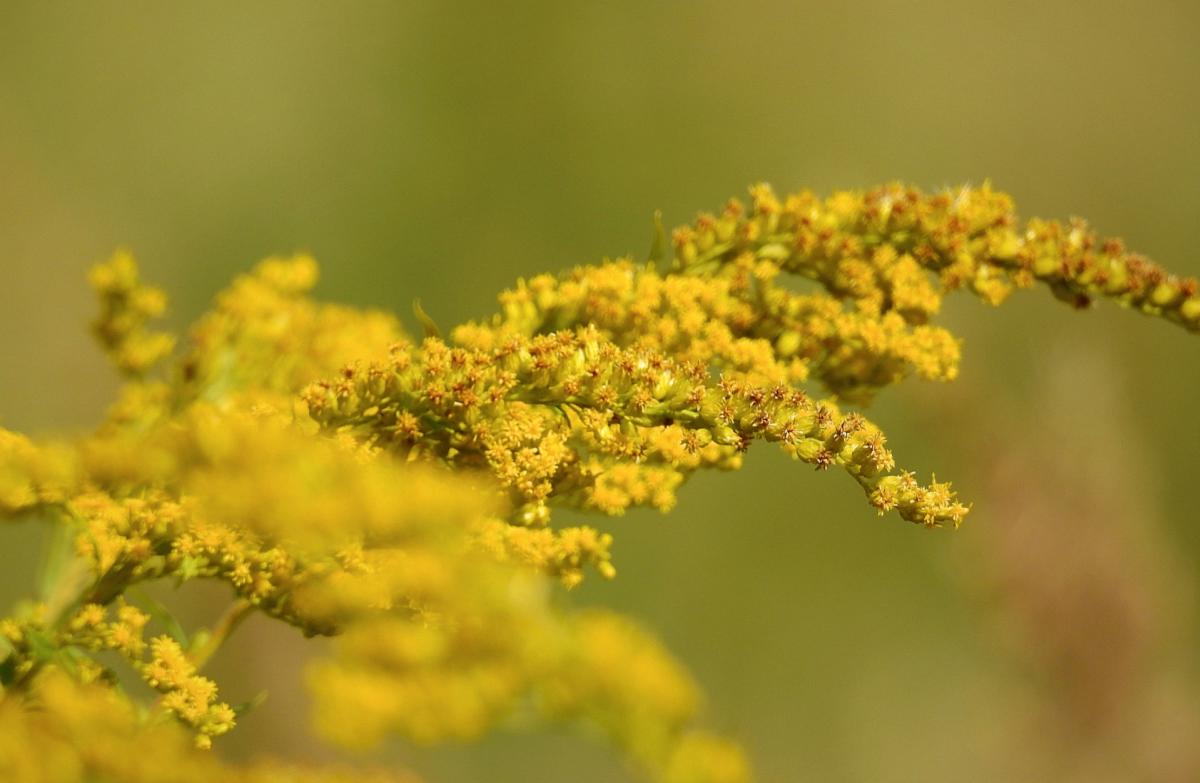
Goldenrod (Solidago spp.) is a vibrant yellow wildflower in various full-sun environments around Durango, including meadows, fields, powerline cuts, and roadsides. Goldenrod has long, shaggy, yellow blooms that reach up to four feet. They bloom from late summer to early fall and are known for attracting bees, butterflies, and other pollinators.
Goldenrod has been used for medicinal purposes by Indigenous peoples for centuries, and it is still used today as a natural remedy for ailments such as inflammation and urinary tract infections.
Interestingly, Goldenrod is often mistaken for causing hay fever, but it is common ragweed that blooms simultaneously—which is the true culprit.
Sunflower
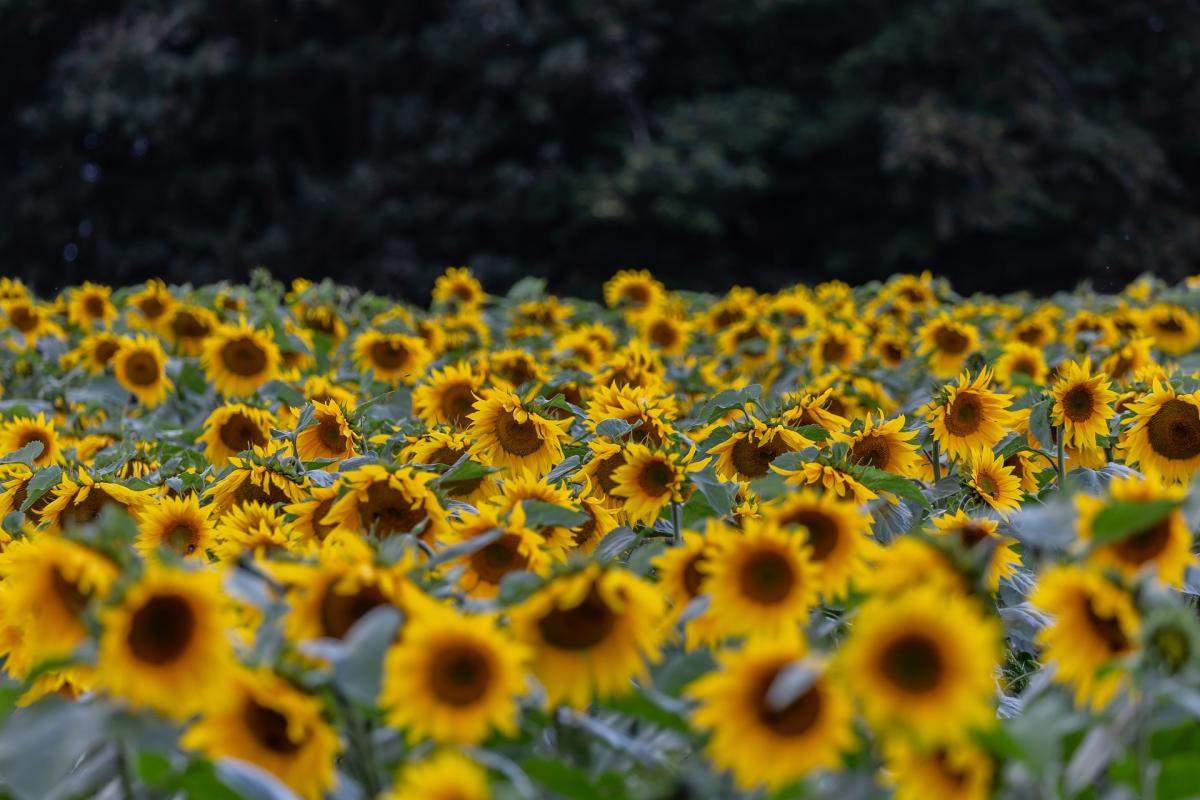
Sunflowers (Helianthus annuus) are a common wildflower found in Durango, Colorado, especially in open fields, meadows, and roadsides. They are an aster family member and can grow up to 10 feet tall.
Sunflowers typically bloom from mid-summer to early fall and are known for their vibrant yellow petals surrounding a dark center.
These wildflowers are also known for their practical uses, such as producing edible seeds and oil. The seeds are often eaten roasted, while the oil is commonly used in cooking and skincare products. In addition, sunflowers are used in biofuel production due to their high oil content.
Indian Blanket
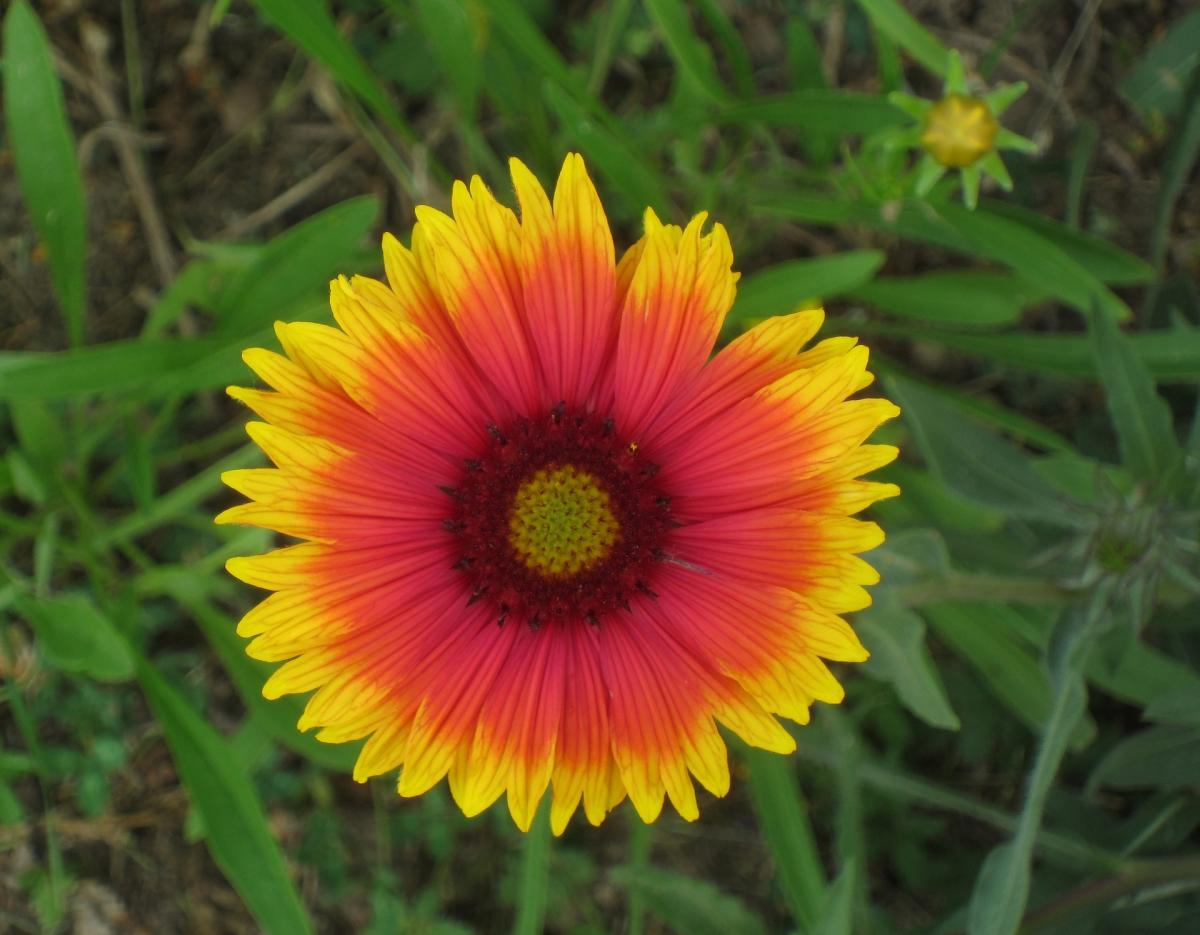
Indian Blanket, or Gaillardia pulchella, is a wildflower commonly found in the Southwest United States. Growing up to 12 inches tall, this eye-catching bright red and yellow flower is named for its resemblance to the traditional blankets used by Indigenous peoples.
Indian Blanket prefers full sun and dry, well-draining soil and can often be found in fields, meadows, and along roadsides.
This wildflower is a favorite of pollinators, such as bees and butterflies. Additionally, Indian Blanket can be used for medicinal purposes, including treating skin rashes and sores. Indian Blankets are often sought out for their beautiful and distinctive appearance.
Black-Eyed Susan
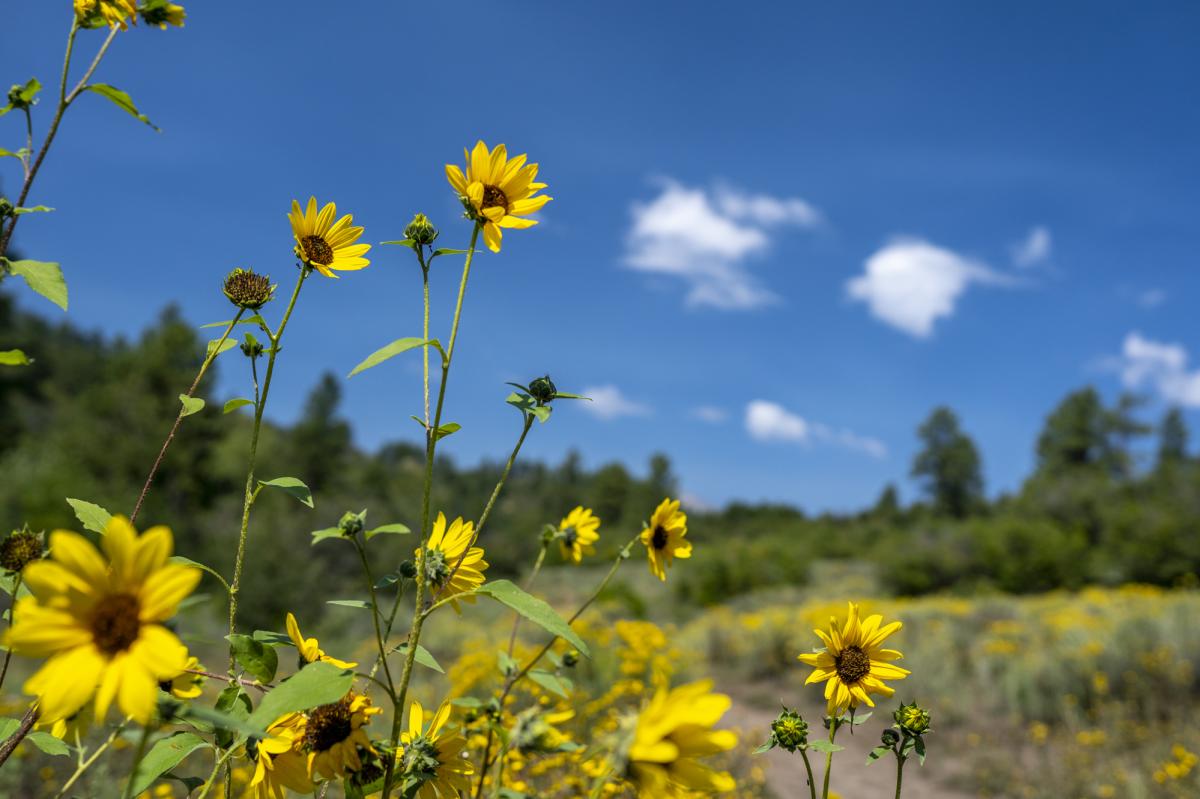
Black-eyed Susan (Rudbeckia hirta) is a wildflower commonly found in the fields and open woodlands near Durango. They can grow up to three feet tall and produce six-inch, yellow-to-orange petals surrounding a dark brown center disk. They prefer well-drained soil and plenty of sunlight and are hardy flowers.
The flowers are known for their medicinal properties and have been used for centuries in Indigenous traditional medicine to treat various ailments such as colds, flu, and infections.
The Black-eyed Susan is also the state flower of Maryland and is a popular garden plant across the United States.
Alpine Primrose
The Alpine Primrose (Primula tetonensis) is a small wildflower that grows in alpine regions of the Rocky Mountains. They bloom from June to August and can be found in meadows, rocky slopes, and other high-elevation habitats above treeline. These three-inch-tall wildflowers have showy clusters of lanced, fragrant, pink, or purple flowers with yellow centers that attract bees and butterflies.
Alpine Primroses are adapted to survive in harsh, cold environments and have wooly leaves to help insulate them from the cold. They are also capable of self-pollination and can produce seeds asexually.
In some Indigenous cultures, the Alpine Primrose has been used to treat coughs, colds, and other respiratory ailments.
Western Indian Paintbrush

The Western Indian Paintbrush, also known as Castilleja occidentalis, is a brightly colored wildflower often found in open meadows and along trails in the mountainous regions of Durango. These five-to-seven-inch flowers bloom from late spring to mid-summer, ranging from bright red to orange, pink, and yellow. The flower's bracts, resembling a paintbrush dipped in red paint, give it a distinctive appearance.
It is found in dry places above or below treeline, favoring rocky soils and talus slopes.
The Western Indian Paintbrush is known to be a partial parasite, relying on the roots of other plants for some of its nutrients. Indigenous peoples have used this unique wildflower for medicinal purposes and as a food source, as the leaves can be cooked and eaten as greens.
Colorado Blue Columbine
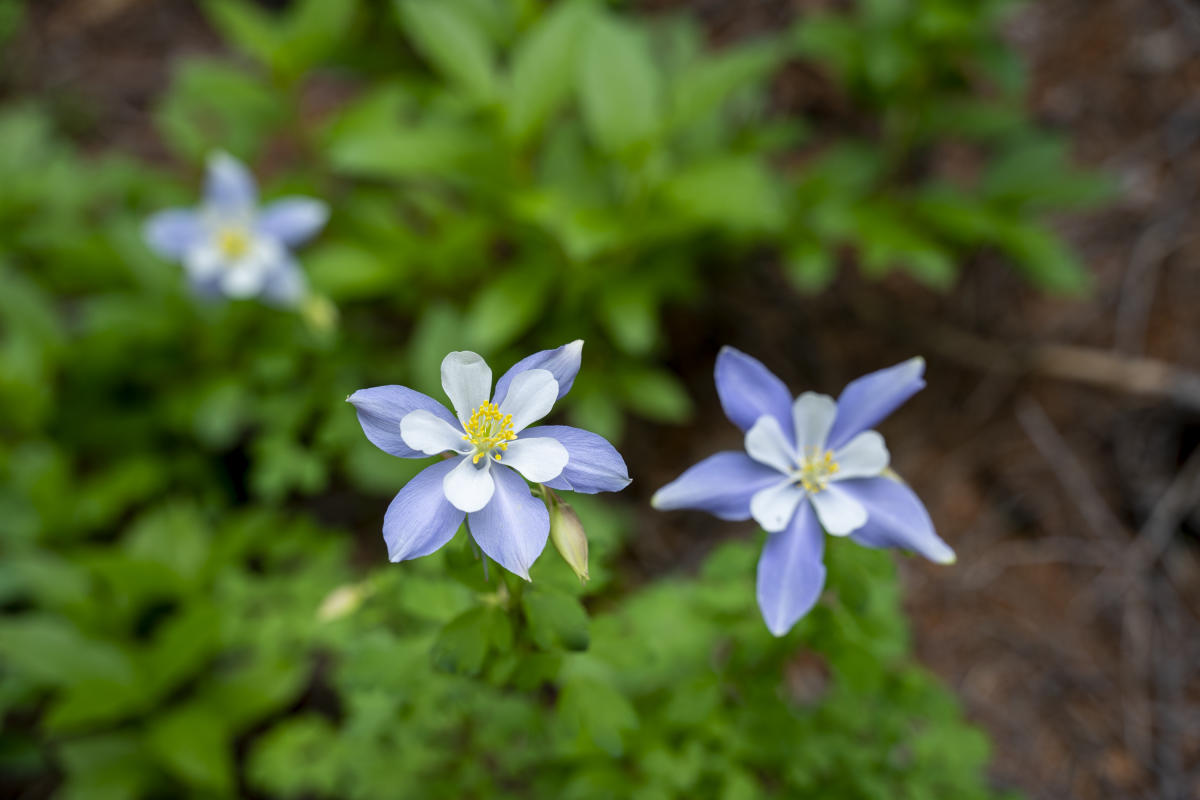
The Colorado Blue Columbine (Aquilegia caerulea) is an enchanting wildflower that can be found in the alpine and subalpine regions of the Rocky Mountains. It grows in areas with well-drained soils and plenty of sunlight, usually around May and June.
This low-lying flower is easily recognizable with its blue and white petals shaped like bonnets.
In American folklore, it is considered a symbol of strength and courage, and it is also the state flower of Colorado.
The Blue Columbine is an important plant for pollinators, especially hummingbirds, which are attracted to the flower's nectar. However, it should be noted that the plant is toxic if ingested.
Larkspur
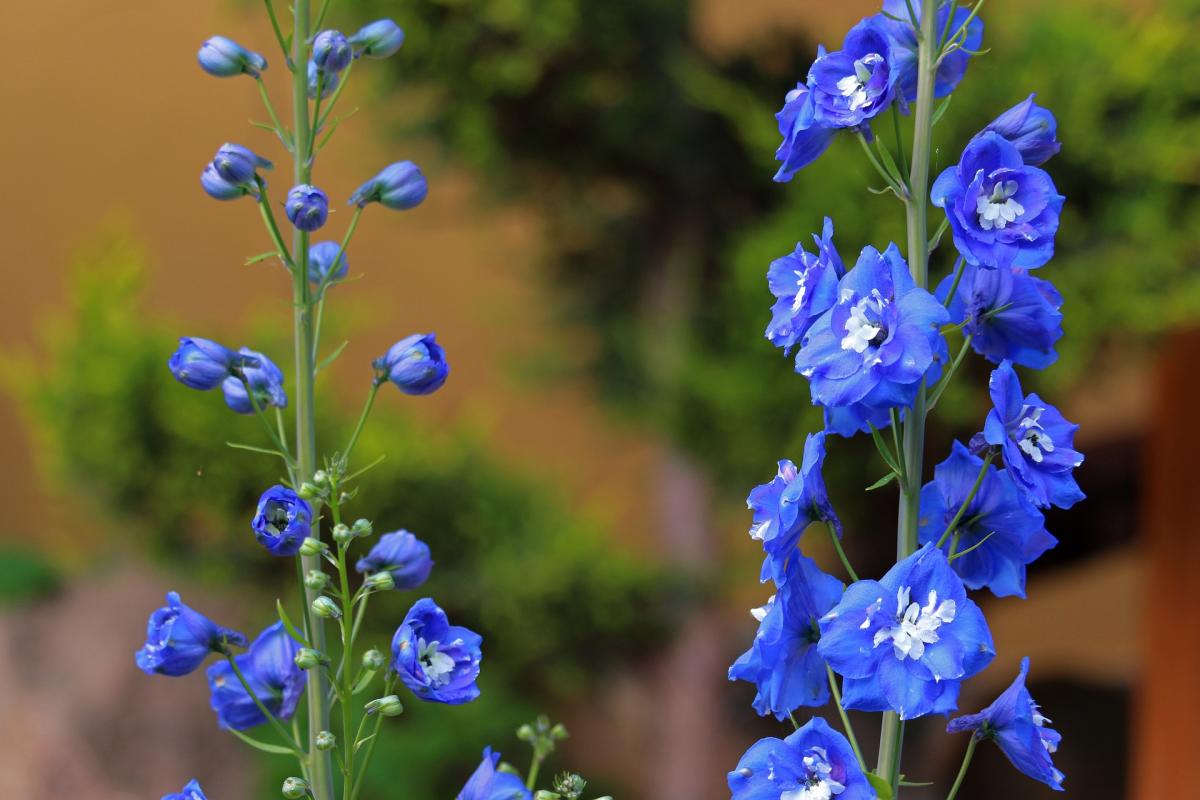
Larkspur (Delphinium consolida) is a beautiful and distinctive group of wildflowers found in the meadows and mountains of Durango. The plant can grow up to six feet tall and has tall spikes of flowers that come in shades of white, blue, purple, and pink. Larkspur is characterized by its irregular blooms grouped at the top of its main stalk.
It grows best in open areas and can often be found in meadows or along streams. It is poisonous if ingested and can cause severe digestive problems in animals and humans.
Interestingly, Larkspur has also been used in traditional medicine to treat various ailments, including nervous disorders and fever. Its striking appearance makes it a popular addition to flower arrangements and gardens.
Rocky Mountain Iris
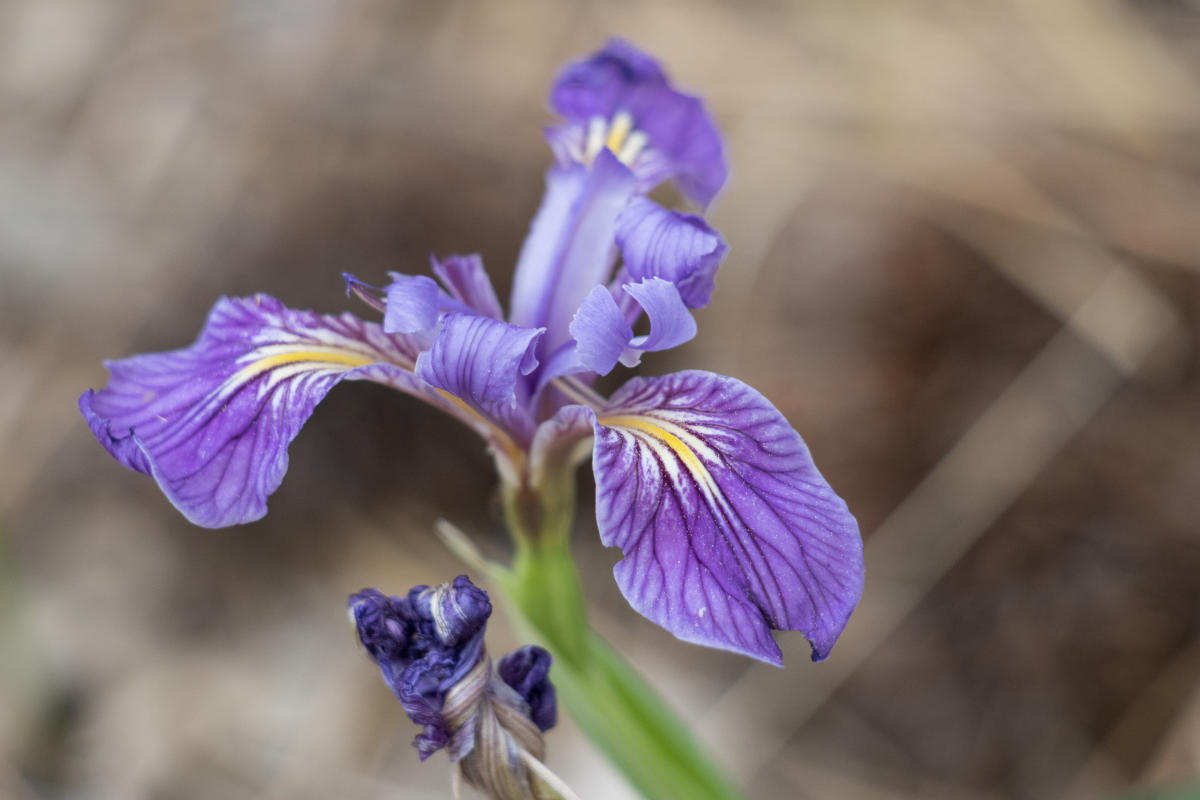
The Rocky Mountain Iris, or Iris missouriensis, is a stunning wildflower native to the western United States. This iris can grow up to 24 inches tall and typically blooms from late May to early July. It is commonly found in moist meadows, streams, and open woodlands.
The Rocky Mountain Iris has large lavender-blue petals with white and yellow markings on its falls. Its leaves are narrow and sword-shaped.
Interestingly, the Rocky Mountain Iris was used by travelers for medicinal purposes, including treating headaches and sores. It is also known to attract hummingbirds and butterflies with its nectar.
Silver Lupine
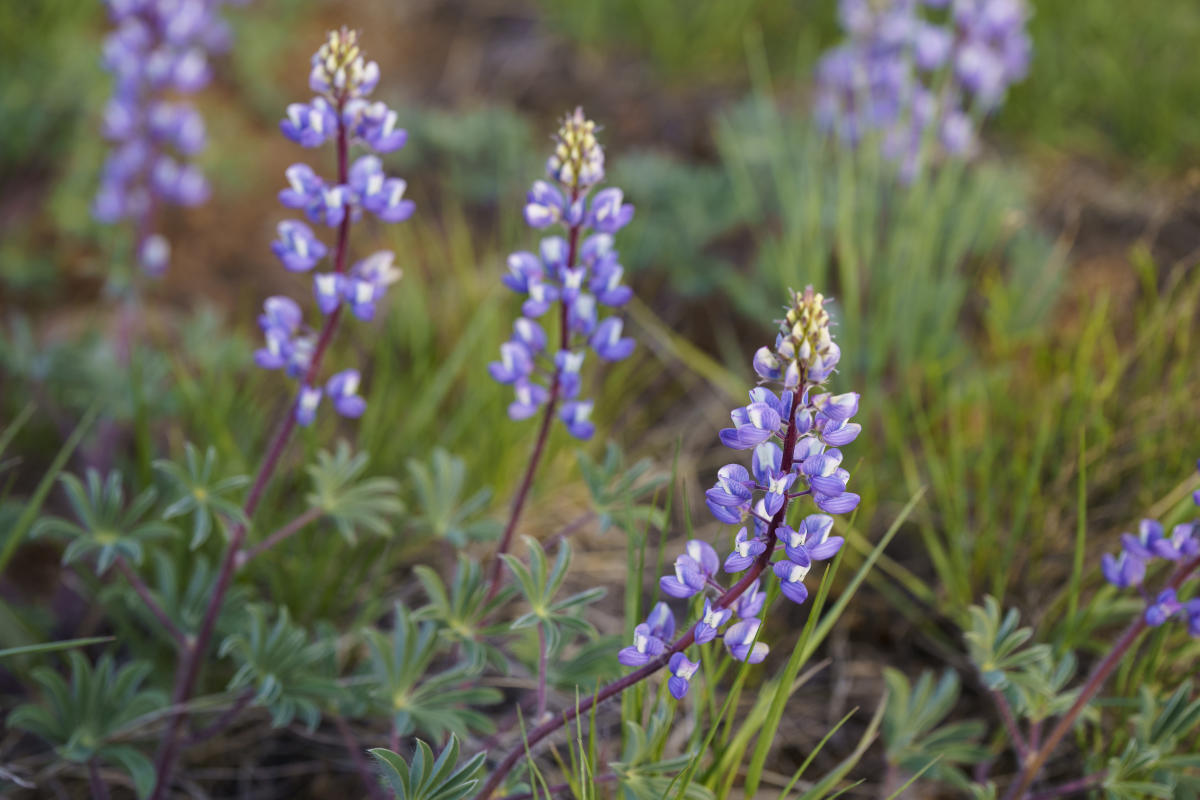
The Silver Lupine, also known as Lupinus albifrons, is a beautiful wildflower found in the mountains and meadows around Durango. The plant can grow up to five feet tall and produces spikes of bright pea-shaped, purple-blue flowers that bloom from June to August. It thrives in rocky, dry soils and is often found in open fields and along roadsides.
The leaves of the Silver Lupine are covered in silver hairs, which help to protect the plant from the intense sunlight in its natural habitat. In addition to being a beautiful wildflower, the Silvery Lupine also plays a vital role in the ecosystem as a host plant for several species of butterfly larvae.
Mountain Bluebell

The Mountain Bluebell (Mertensia ciliata), also known as the Colorado Bluebell, is a beautiful wildflower found in moist habitats like the subalpine meadows, creeksides, and forests in the Durango area. Its blooms are a stunning shade of deep blue-purple shaped like small bell clumps. The Mountain Bluebell grows on stems that can reach up to 48 inches tall and be found in clusters of 10-20 flowers. Interestingly, the flowers of the Mountain Bluebell are edible and have been used by backpackers and hikers as a food source. Additionally, the plant's leaves have been used in traditional medicine for their antiseptic properties.
Alpine Phlox

Alpine Phlox (Phlox condensata) is a stunning wildflower that blooms in shades of pink, blue, and purple. It is typically found in alpine or subalpine meadows and rocky areas.
Alpine Phlox plants generally have five petals, which can be angular or slightly pointed at the ends. It is a hardy plant that can withstand harsh mountain conditions and is often seen growing in patches.
This wildflower is an important food source for bees, butterflies, and other pollinators, and it adds a burst of color to the mountain landscape during the summer months.
Conclusion
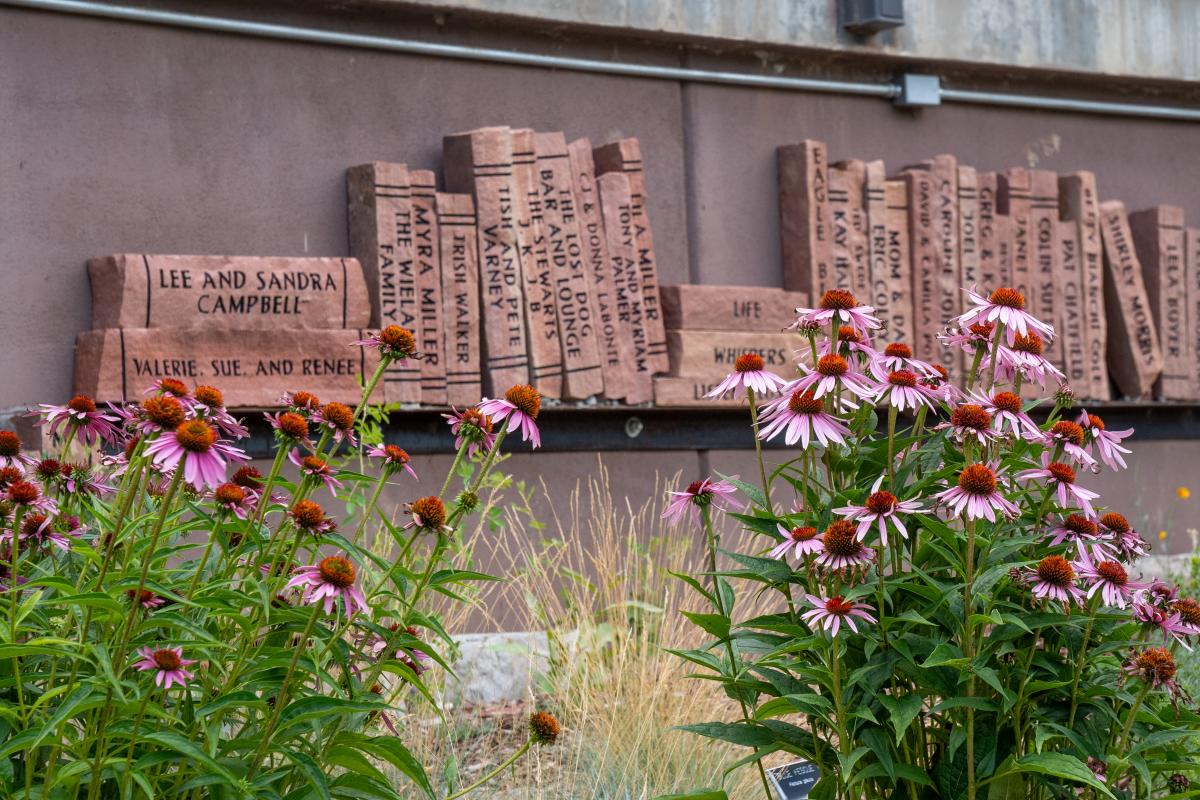
In the warmer seasons, Durango is home to fantastic spring adventure opportunities for wildflower enthusiasts. Its diverse range of ecosystems, from alpine tundra to desert canyons, offers a wide variety of wildflowers that can be found nowhere else.
The colorful and beautiful Oxeye Daisy, Goldenrod, Indian Blanket, Sunflower, Black Eyed Susan, Indian Paintbrush, Blue Columbine, Larkspur, Rocky Mountain Iris, Silvery Lupine, Alpine Primrose, and Mountain Bluebell are just some of the many wildflowers that adorn the trails of Durango.
Whether you are an experienced botanist or just someone who loves the beauty of nature, Durango's spring wildflower displays will not disappoint!






